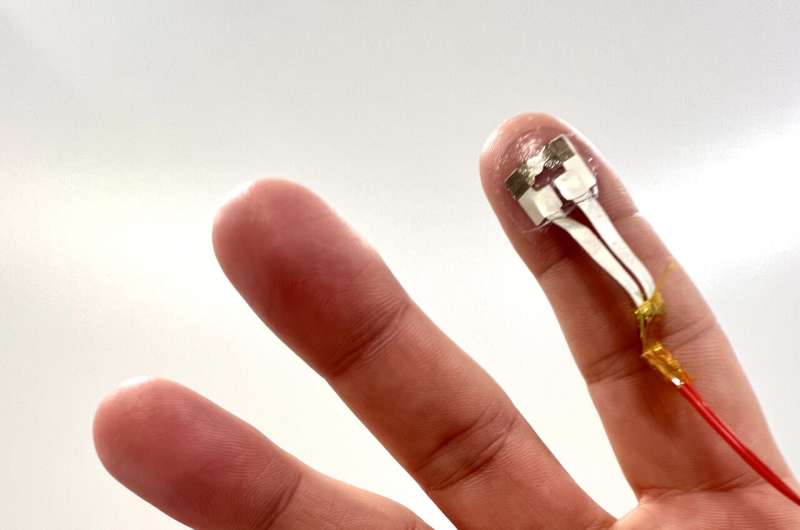An ultra-thin tattoo that gives a tactile sensation
An ultra-thin wearable device capable of reproducing the localized sensation of touch had been developed at the Center for Materials Interfaces of the Istituto Italiano di Tecnologia (Italian Institute of Technology, IIT), in Pontedera, Italy. The technology is described in a recent paper published in the journal Advanced Electronic Materials.
Touch is a fundamental sense, and touching the surrounding environment and perceiving tactile sensations from external stimuli is an almost fully automatic skill, fundamental to daily tasks. Therefore, replicating tactile sensations in artificial wearable devices could find multiple important uses, such as reproducing sensory feedback in amputees using a robotic limb, controlling teleoperated robots with a higher precision, providing information to blind people through so-called “Braille displays,” or as interfaces in virtual environments and gaming, enhancing the immersive experience of users.
The new system, developed by two IIT researchers, Arianna Mazzotta and Virgilio Mattoli, is an electronic tattoo a few micrometers thick and designed to arouse a tactile sensation, thus generating a force that pushes on the skin of the person who is wearing it, which can then perceive a touch.
The research team has demonstrated the functioning of a single “tactile” dot, and they are working on the implementation of displays that will include several tactile pixels, called taxels, which can be activated independently from each other to reproduce letters, numbers, as well as directional and dynamic patterns on the skin.
The electronic temporary tattoo—like those used by children—is small and easy to wear, allowing for use in everyday life, and it is able to generate a very localized force, capable of restoring a tactile sensation on the skin to which the device adheres perfectly.
The tactile device is based on an electro-thermo-pneumatic actuation strategy, which consists of electrically heating, in a fast and very localized manner, a small volume of air enclosed between two very thin films. As it expands, the air generates forces and displacements on the skin placed in contact, producing the tactile sensation. Due to its very low thickness, the tattoo is virtually undetectable once transferred onto the skin, which is crucial for its potential final application as a tactile display.
Moreover, unlike most other devices designed and proposed so far to generate tactile sensations through forces and deformations, this system is also able to operate powered by a small battery, at low voltages, ensuring complete safety for the person who is wearing it.
Preliminary usage test results showed great promise in terms of functionality, suggesting the use of this technology as a possible new standard in the manufacture of lightweight, portable, and energy-efficient tactile displays.
More information:
Arianna Mazzotta et al, Ultrathin Conformable Electronic Tattoo for Tactile Sensations, Advanced Electronic Materials (2023). DOI: 10.1002/aelm.202201327
Italian Institute of Technology
Citation:
An ultra-thin tattoo that gives a tactile sensation (2023, November 27)
retrieved 28 November 2023
from https://techxplore.com/news/2023-11-ultra-thin-tattoo-tactile-sensation.html
This document is subject to copyright. Apart from any fair dealing for the purpose of private study or research, no
part may be reproduced without the written permission. The content is provided for information purposes only.

Comments are closed